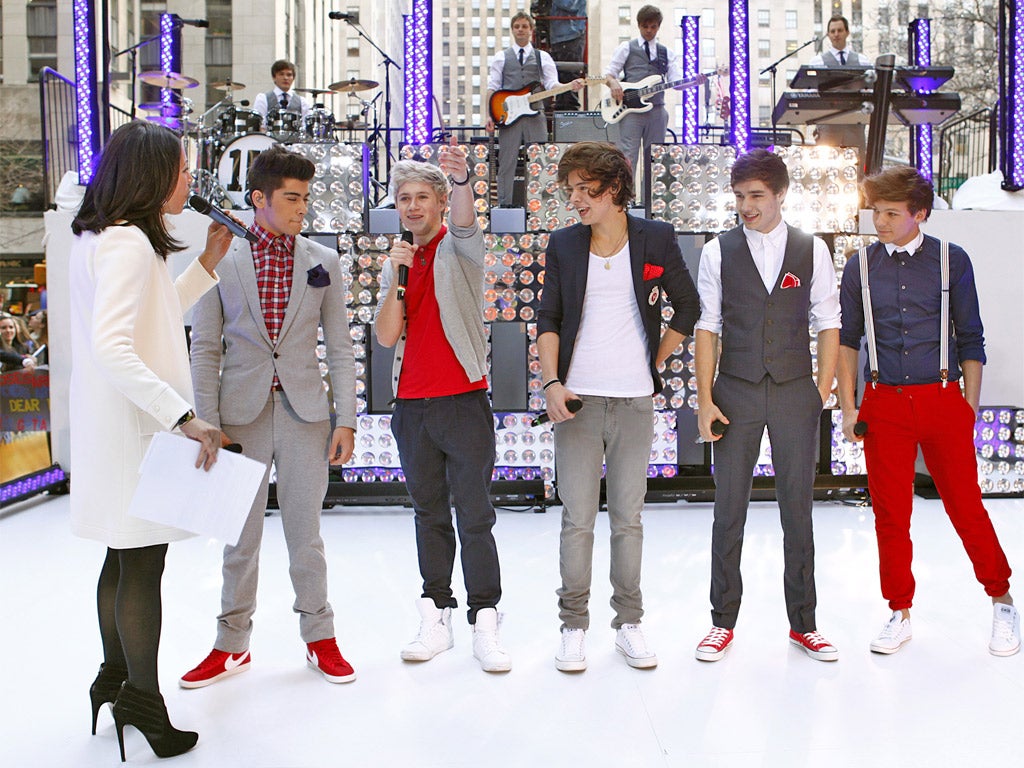One Direction and The Wanted: If they can make it there...
British boybands One Direction and The Wanted have taken the US – and the pages of The New Yorker – by storm. Tim Walker charts their stateside success

Your support helps us to tell the story
From reproductive rights to climate change to Big Tech, The Independent is on the ground when the story is developing. Whether it's investigating the financials of Elon Musk's pro-Trump PAC or producing our latest documentary, 'The A Word', which shines a light on the American women fighting for reproductive rights, we know how important it is to parse out the facts from the messaging.
At such a critical moment in US history, we need reporters on the ground. Your donation allows us to keep sending journalists to speak to both sides of the story.
The Independent is trusted by Americans across the entire political spectrum. And unlike many other quality news outlets, we choose not to lock Americans out of our reporting and analysis with paywalls. We believe quality journalism should be available to everyone, paid for by those who can afford it.
Your support makes all the difference.The Beatles did it. The Stones did, too. Bizarrely, Bush managed it, where Oasis and Take That never could, nor Westlife, Boyzone or 5ive. Coldplay cracked it, and so – oh, dear – did the Spice Girls. Now, without question, One Direction and The Wanted have both joined the short list of British bands that have "broken" America.
Although Britain's two hottest boybands already have high profiles in the US, they leapt this week from the safety of the pop charts into the hallowed pages of The New Yorker, North America's leading highbrow magazine – featuring in two separate pieces for the latest issue. Despite having long been lodged in the minds of excitable teenagers, they've now finally arrived in the consciousness of the intellectual elite.
In March, Simon Cowell's protégés One Direction became the first British pop band in history to enter the US album charts at No 1 with their debut LP. The band are due to headline Madison Square Garden, Manhattan's premier music venue, in December. Hasbro is planning to produce a set of One Direction action figures.
The success of Up All Night, which has now sold more than a million copies and more than five million digitally downloaded tracks, saw them frequently compared to The Beatles, who first arrived in America at the head of the "British Invasion" in 1964.
"You laugh about it," said One Direction band member Zayn Malik soon after its release, "someone comparing you to such a huge phenomenon."
New Yorker music writer Sasha Frere-Jones suggests One Direction's success was built on social media and the influence of the internet, and that, unlike boybands of the past, their appeal is laddish, their role models rock stars, not R&B crooners. "What One Direction really sounds like, though," Frere-Jones writes, "is a bunch of girls."
If One Direction are The Beatles, then The Wanted are the Stones, self-consciously gritty by comparison. Not so gritty, though, that their single "Glad You Came" couldn't appear in an episode of Glee, and subsequently rise to the top five of the US singles chart. They appear in a New Yorker article about their manager, Scooter Braun, who also represents Justin Bieber. Indeed, there is speculation that the likes of One Direction might have been marketed so heavily in the States as potential replacements for tween titan Bieber, who at 18 could well be approaching his best-before date.
Might this explain his strange backstage game, recounted by New Yorker writer Lizzie Widdicombe, of "playfully jabbing everyone in the crotch with his fist"? When Bieber "jabbed at Siva Kaneswaran, a member of The Wanted, he connected. He called out, 'Got you, bro.'" No wonder he's so popular.
Join our commenting forum
Join thought-provoking conversations, follow other Independent readers and see their replies
Comments